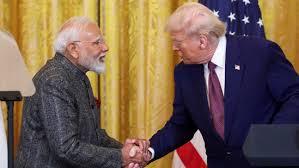US President Donald Trump recently claimed that India has offered the United States a deal with zero tariffs on American goods. However, India quickly clarified that negotiations are ongoing and no agreement has been finalized yet. This development highlights the complexities of the US-India trade relationship in 2025 amid global trade tensions.
Understanding the India Tariff Dispute
President Trump stated during a business roundtable in Doha, Qatar, that India is one of the highest tariff nations globally, imposing heavy taxes that make it difficult for US exporters. According to Trump, India has now proposed charging no tariffs on US imports, a significant shift if true.
However, India’s Foreign Minister S. Jaishankar emphasized that the talks are “complicated” and “intricate,” with no decisions finalized. He stated that the trade deal must be mutually beneficial, underscoring the negotiation’s delicate nature.
The Current Trade Imbalance Between India and the US
The US is India’s largest trade partner as of 2024, but India ranks only tenth among US trading partners. The trade deficit has widened significantly, with the US importing $45.7 billion more from India than it exported in 2024. Key US imports from India include pharmaceuticals, communications equipment, and apparel, while US exports to India include oils, gases, chemicals, and aerospace products.
Trump’s Tariff Policies and Their Impact
Since his presidency, Trump has implemented a baseline 10% tariff on all imported goods and threatened even higher “reciprocal tariffs.” India faces a 26% reciprocal tariff on its exports to the US, increasing tensions. The Trump administration has also criticized India’s value-added and digital services taxes, as well as regulatory hurdles for imports.
Recent developments in US trade relations include a tariff framework with Britain and a surprising temporary tariff rollback agreement with China, showing a mixed picture of trade diplomacy.
What This Means for Businesses and Consumers
- If India eliminates tariffs on US goods, it could open vast new markets for American exporters.
- Reduced tariffs might lower prices for consumers in both countries by facilitating smoother trade.
- The ongoing talks highlight the strategic importance of US-India trade relations amid global economic shifts.
Conclusion: Trade Negotiations Remain Uncertain
While President Trump’s announcement about zero tariffs is hopeful news for American businesses, India’s caution suggests a complex negotiation ahead. Both countries appear committed to finding a deal that benefits their economies, but patience and careful diplomacy will be key.
For more detailed insights on US-India trade relations, see our related trade analysis article. Stay updated with the latest trade news on the Business Trade section.


